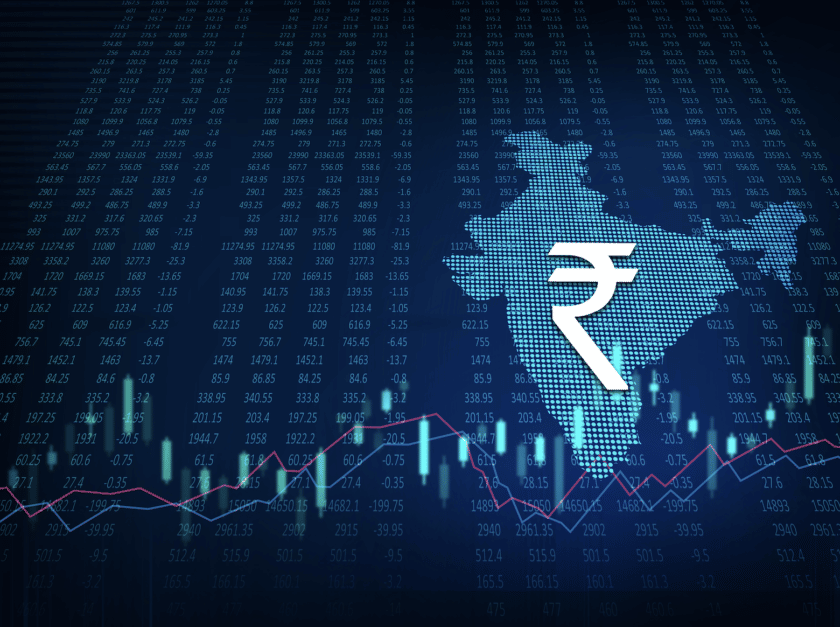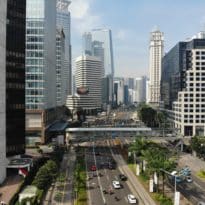As India’s economy grows, so do the investment opportunities, says Juliet Schooling Latter, research director, FundCalibre.
A decade ago, India was the world’s 11th largest economy. Today it is the 5th largest, bigger than the UK*.
With 6.1% growth predicted for 2023 – the fastest growth rate in the world – and 6.8% in 2024, it is also likely to become the 4th largest economy in the world by 2027*.
In the last couple of years, strong economic growth has coincided with strong equity returns in the country. In 2021, the MSCI India returned 27% compared with losses of -1.6% for the wider MSCI Emerging Markets index and -3.8% for the MSCI Asia ex Japan index**.
2022 was a similar story with the MSCI India returning 3.6% while the wider markets fell again to the tune of 10% each***.
However, the Indian stock market has had a tough start to 2023 with the index falling just under 10% itself. So can the good times return?
What’s the short term outlook for Indian equities?
“India’s outperformance in 2021 and 2022 was driven by India specific events such as coming out of Covid strongly and the reforms the government put in place,” commented Hiren Dasani, manager of the Goldman Sachs India Equity Portfolio.
“Today the index is expensive, so the argument is against it, but there are strong earnings that are still coming through and we are still in the mid-cycle of recovery,” he continued. “I’m not worried about valuations – in the short term Indian equities might underperform, but in the mid-long term, domestic growth is still favourable.”
Dividends continue to grow
Another area that may interest investors is the growing dividends to be found in the country. According to the latest Janus Henderson Global Dividend Index Brazil, China and India accounted for three quarters of the dividend increase year-on-year in emerging markets.
“In India, software and IT service companies accounted for four tenths of the annual increase,” the report stated. The country saw record dividends in 2022. In fact, dividends have almost doubled since 2016.
Long-term themes
Stewart Investors cites a number of long-term themes that will support investment in the country going forward. These include a lower carbon future, infrastructure investment, improvements in the healthcare and financial services ecosystems, and a revival of the property cycle.
Sashi Reddy, manager of the Stewart Investors Indian Subcontinent Sustainability fund, commented: “The region is home to roughly 20-25% of the world’s population, but currently ranks 132 in the Human Development Index, while its neighbours aren’t doing much better.
“Many human development issues such as access to affordable finance, quality healthcare and education, and infrastructure are yet to be solved. An impending climate crisis means the subcontinent has to leapfrog many phases of evolution that the West or even China have endured. Evolution of mobile telephony, digital payments and e-commerce is evidence that such leapfrogging is both possible and desirable.
“If the Indian economy grows at 6% per annum, we believe it will take India roughly 30 years to reach the standards of living we see in China today, as per our estimates. This is an attractive long-term opportunity for investors. However, a stable socio-political regime with sufficient checks and balances is necessary to stay on this development path.”
Infrastructure and manufacturing opportunities
Dan Billis, Senior Investment analyst on the Alquity Indian Subcontinent fund, is enthusiastic after a recent trip to the country.
“The unveiling of the Union budget in February 2023 by Finance Minister Nirmala Sitharaman
has generated a huge amount of buzz within the country,” he said. “Present Government is on a reform spree”, “it’s really fantastic”, “we have a phenomenal growth trajectory” were some of the comments I received from companies during my meetings on a recent trip.”
“Government capital expenditure is forecasted to surge 37.4% this year, representing an increase of almost 2.5x since the financial year 2021. But it’s not just the absolute amount that has increased, as the share of capital spending in total government expenditure is expected to rise to 22.2%,” he continued.
“This represents the highest share in 18 years and compares to just 12-13% in pre-Covid years. Included in this increase was a boost to aviation and domestic connectivity with an impressive plan to add 50 airports, which will help boost the domestic tourism market. Other measures included the highest ever spending allocation on railways, representing a nine-fold increase when compared to a decade ago.
The team behind the Aubrey Global Emerging Markets Opportunities fund say Indian infrastructure is finally shifting from a ‘hindrance’ to a ‘help’. They said: “In the words of The Economist, “India is getting an eye-wateringly big transport upgrade.” The current breakneck pace of infrastructure spend is most painfully obvious in Mumbai, where city planners are trying to build out 10 metro lines simultaneously, as well as a highly ambitious and partly submerged coastal expressway. It is the same story in Indore, India’s 17th most populous, and apparently cleanest, city where another metro line is under construction.”
Waiting for better opportunities
Not everyone is so keen on investment in the country, however. For example. Richard Sennitt, manager of the Schroder Oriental Income trust and Schroder Asian Income fund has zero exposure in the funds today.
“India is generally a low yielding market – 1-1.5% – and what we tend to find is that the companies that do yield more are generally businesses that we don’t like from a bottom-up perspective,” he said. “So, it has meant that our exposure to India within the Schroder Asian Income fund has been relatively small, if we have anything at all.
“That said, there are stocks which, if they were at the right valuation, we would be interested in looking to put into the fund.
“We like the longer-term growth prospects, but we want to see the market pull back before adding there. And, to give you some context in our non-income portfolios, we have been taking some money out of India selectively and are now slightly underweight versus the index.”
*Source: IMF, September 2022
**Source: FE fundinfo, total returns in sterling, calendar year 2021
*** Source: FE fundinfo, total returns in sterling, calendar year 2022
^ Janus Henderson Global Dividend Index Edition 37, March 2023
Past performance is not a reliable guide to future returns. You may not get back the amount originally invested, and tax rules can change over time. The views expressed are those of the author and fund managers and do not constitute financial advice. The mention of specific securities and funds is for illustration purposes only and not a recommendation to buy or to sell.




























